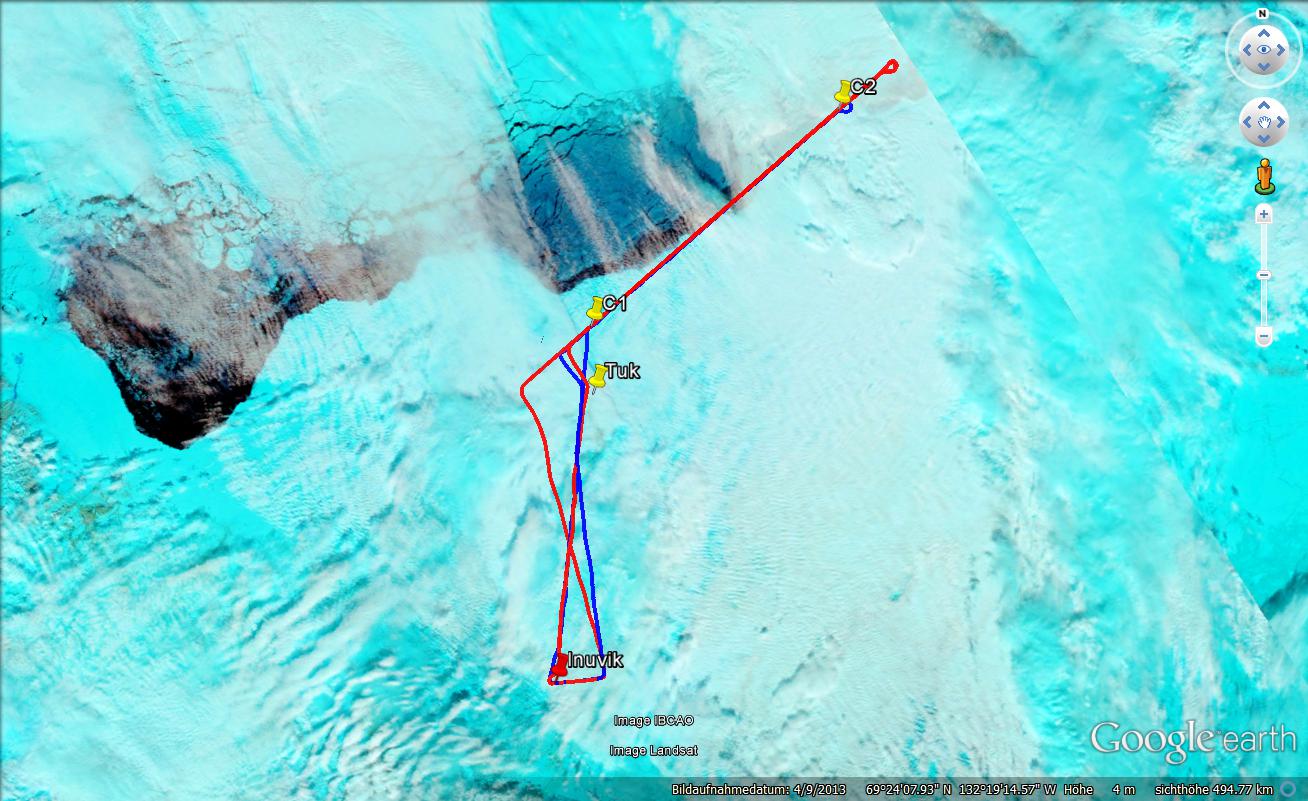
| Take Off: | P5 20:15 UTC | P6 20:11 UTC |
| Touch Down: | P5 22:56 UTC | P6 22:34 UTC |
| Duration | P5 2:41 h | P6 2:23 h |

A small but intense low pressure system was moving north of the shore line fast from west to east. The severe weather with freezing rain did not allow an early flight. At about 9 am rain and short after snowfall reached Inuvik. After the low pressure system crossed Inuvik, the conditions improved. As forecasted, on the rear side of the low pressure system in the cold air mass, low level clouds were situated. Midlevel and cirrus clouds were not predicted for the area north east of Inuvik which was the target of this flight. The flight strategy was not changed compared to flight #1. One straight leg between C1 and C2 was sampled in collocation by Polar 5 and Polar 6.
Polar 5 approached C1 in 10,000 ft altitude. A low cloud layer and high cirrus was observed below and above P5. Far before C1 the cirrus field ended and conditions were ideal for remote sensing. On the first leg we observed clouds with different cloud top altitudes. In the first quarter, cloud top was below 600 m. In parts, the clouds were thin enough to be penetrated by AMALi. Later, the cloud top altitude increased in steps. First up to about 750 m above ground then to 1000 m. Towards the end of the log close to and behind C2 multiple thin cloud layers were detected, some reaching altitudes above 2000 m. The leg was extended for some miles to let P6 pass and get in front for the leg back to C1. On the way back to C1, four drop sondes were released. Each intended to characterize one of the different cloud parts identified before by Amali. The drop sondes also detected multilayer clouds. Close to C1, the cloud intensified showing a homogenous cloud field. To probe this cloud with sufficient data and to release a further dropsonde, the second leg was expended for 20 NM behind C1.
On the way from Inuvik to C1, Polar 6 observed different clouds, an areas with double cloud layer, single layer and broken clouds. Between C1 to C2 four experiments were exercised. First Polar 6 sampled the upper layer of shallow closed stratus. Then the cloud system was investigated in stepwise by a ''Three-step-staircase'' indicating a cloud thickness of 300 ft. Later in the leg the cloud top entrainment zone was investigated by dropping down with Polar 6 only a few meters below cloud top measuring alternating in and outside the cloud. Close to C1 a ''Six-step-staircase'' to cover the vertical cloud distribution was performed. On the way back to C1 the ''Six-step-staircase'' exercise was repeated. After that, trace gases were sampled at three altitude levels between 5,000 and 10,000 ft.